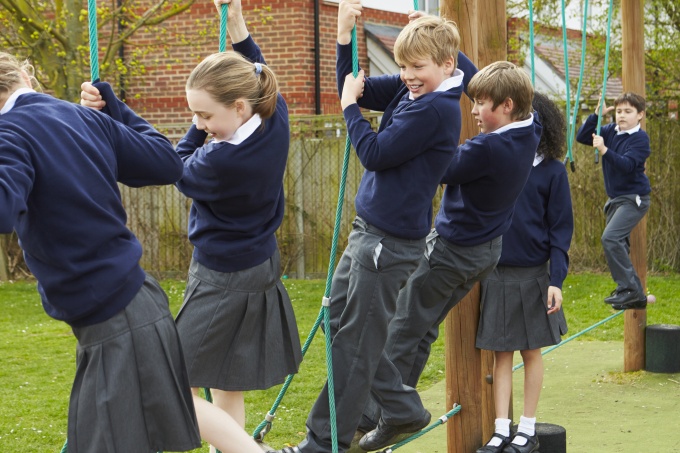This short report considers the potential outcomes of Thrive over the medium to longer term, in other words any outcomes that might occur beyond 3 or 4 years but potentially up to 10 or even 20 years following the implementation of Thrive.
As in the reports exploring the short-medium term outcomes of Thrive, the longer term outcomes are structured broadly around 4 stakeholder groups, although given the nature of the outcomes and how they might play out over this much longer time horizon, the distinctions between the various stakeholder groups inevitably start to become blurred.
Another difference from the previous reports on outcomes is that there is necessarily a greater emphasis on the links between outcomes, in other words the factors which help make one outcome lead to another, even if themselves such factors are not material outcomes. This is important with respect to the development of a transparent impact map with a focus on materiality.
Given the weight of potential impacts it is apposite to begin this discussion of medium to longer‐term outcomes with a focus on the lives of children. Depending on the developmental stage at which Thrive was first introduced there are obviously some tangible outcomes for educational attainment which may lead to better GCSE exam results, and in turn will help to open up opportunities for further education and employment which otherwise wouldn’t have been possible. In cases where the interruption was particularly severe, children may not have attained any formal qualifications at all thus making the implications for onward employment and life chances all the more pertinent.
And of course there may be measurable improvements of attainment for those children who have benefited indirectly through Thrive, as a result of exposure to Thrive activities and philosophies, but also through the increase in self awareness, less time pressures and reduced stress on the part of teachers and carers. These benefits may be accentuated where a whole class or school approach is taken, with Thrive helping all children to be more respectful, more compassionate and to have more empathy for others.
Role models can also be powerful in shaping the life trajectories of young people and Thrive may have played an important part in shaping that positive influence that stays with them as they grow and develop.
The Thrive model suggests that patterns of emotional discharge and defensive manoeuvres settle into ‘identities’ between the ages of 3‐6/7. Thrive training aims to support staff to observe and identify these patterns early. If the training is successful, the self‐awareness of the adults and their understanding and recognition of these patterns allows them to create opportunities for early developmental needs to be addressed. This in turn, the model would argue, allows a new sense of identity and new behaviours to emerge.
Arguably the most profound impacts of Thrive over the longer-term stem from these factors and arise through the positive benefits that it can have on the emotional health and wellbeing and lasting feelings of self‐esteem and self-worth that Thrive can generate. To understand such outcomes it is important to consider how improvements in self-worth and emotional resilience can lead to material outcomes over the medium to longer term. Development of these two attributes helps to build a greater sense of inner security and strength and provide coping mechanisms to deal with life circumstances. The potential ramifications of this are enormous, particularly over longer time frames and are therefore difficult to track. Following this through it is possible to piece together various outcome trajectories which are underpinned by factors associated with self-esteem, self-worth and emotional resilience.
Over the medium term there may be a reduction in the numbers of children going into the short‐term respite or longer-term care and all types of school are likely to see disruptive behaviours such as bullying become less prevalent as children become more secure in themselves and aware of their own and others’ feelings. Further out it would be logical to foresee improvements in crime rates and less young people going into young offenders institutes, and less pressure on the criminal justice system.
And once the potential outcomes of widespread improvements in feelings of self-worth and emotional regulation are started to be unpacked, further trajectories of impact become possible. The Thrive model would see domestic violence and unplanned pregnancies as being possible outcomes from the disregulated discharge of strong emotions or the playing out of early unmet needs. By feeling positive about themselves and having more recourse to emotional regulation people may feel they have the power and control to do something about abuse and mis-treatment from others, so over the longer term reduced levels of domestic abuse and physical and mental abuse generally, could be derived from Thrive. A lot of this stems from the emotional awareness and resilience that is instilled by Thrive at a very early stage but which is carried forward long after an ‘interruption’ is addressed. And not only will people be better armed to deal with abuse but they will be less likely to be abusers as self-worth underpins security, identity and self-respect.
Likewise, with greater emotional resilience leading to better coping mechanisms the numbers of people suffering from mental illness like depression could possibly be reduced. In terms of referrals to psychological and mental health services (Educational Psychologists or Child & Adolescent Mental Health Services personnel) early identification in school and care settings could mean a reduction in numbers so that the most needy gain quicker access to the services they need while the broad preventative work is done relationally in educational and care settings.
Potentially, those requiring longer term therapy, either from engrained mental health issues stemming from developmental interruptions or from the fall‐out from traumatic life events, could substantially reduce, as could levels of substance abuse and the numbers involved in, and requiring treatment from, alcohol, drugs and self‐harming.
In addition there are two further inter‐related trajectories of outcome that are possible which are underpinned by the impacts of Thrive on self-worth over the longer term. And both relate not only to the well‐being and quality of life of individuals, but also to families, and in turn have potentially important ramifications for wider society over the longer term. One is its potential to reduce the incidence of teenage pregnancies, which itself stems from children growing up with a greater sense of self-worth. One view expressed was that teenage pregnancies are often caused by girls not only failing to keep themselves safe, but also through them wanting to be wanted by people and as a result choosing inappropriate partners and suddenly falling pregnant. This feeling of ‘wanting to be wanted’ is in turn caused by a lack of self-esteem and self-worth, which can often stem from interruptions caused early in childhood.
In parallel to this it was also observed that poorer families often have considerably more children than wealthier or better‐educated families. Again, it is logical to assume that this pattern stems in large part from low feelings of self-esteem and self-worth, not only of children as they grow up but also of the parents of children with interruptions as they too start to benefit from Thrive.
Thus, if schools are working more closely with parents and making them feel much more valuable and valuing their experiences, and increasing their self-worth a tangible outcome over the longer term could be a reduction in very large families where the ‘Mum just goes from one child to another child’.
While further research would be required to examine these outcomes as they come to fruition, in relation to forecasting potential outcomes from Thrive there is an important story here in terms of its impact on families and wider society over the longer term. This relates both directly on children and young adults and their life chances as they become adults and form relationships, and to the indirect influence over the parents of children with interruptions who may benefit from a sea change in their own attitudes and self-worth.
This sequence of outcomes also captures the potential of Thrive to begin the process of changing a whole generation of parenting as the children who benefit from the Thrive approach go on to become parents themselves.
Thrive therefore has the potential to help address a host of problems caused by intergenerational transmission in families including low self-esteem, poor educational attainment and being in care. In fact intergenerational transmission and related dysfunctional families and relationships are increasingly being seen as a core problem of ‘troubled families’ and the associated costs and services required to ‘simply contain families in dysfunction and hopelessness’ (DCLG, 2012). For its potential to address a crucial aspect of this intergenerational transmission Thrive clearly has a role to play in this debate.
Over to you
Reduced anxiety and behavioural incidents. Calmer classrooms filled with engaged leaners. Improved relationships with parents and carers. These are just some of the outcomes reported by settings embedding Thrive’s whole-school approach to mental health and wellbeing. Are you ready to join them? Click here to get started.
Pass it on
Small actions can lead to a big ripple effect. If you enjoyed this post or found it helpful, please consider supporting us in our mission to help every child and young person feel safe, supported and ready to learn by sharing it using the social media buttons below.
Want to join a like-minded community of senior leaders and classroom staff benefitting from insights and strategies to improve attendance, behaviour and attainment? Add your email address below. (It’s easy to unsubscribe).

_680.jpg)

(7)_680.jpg)
_680.jpg)
